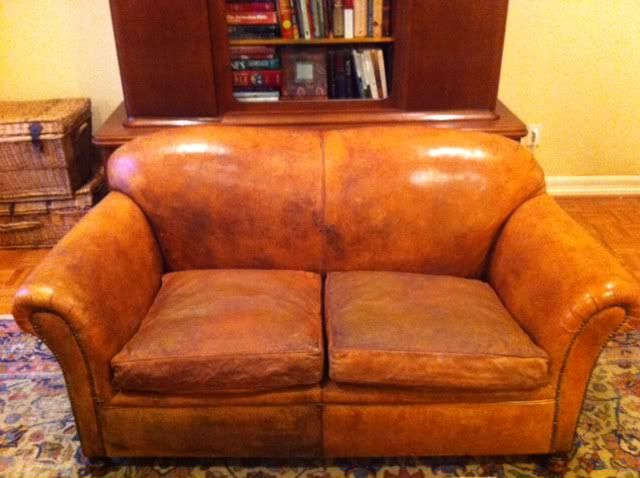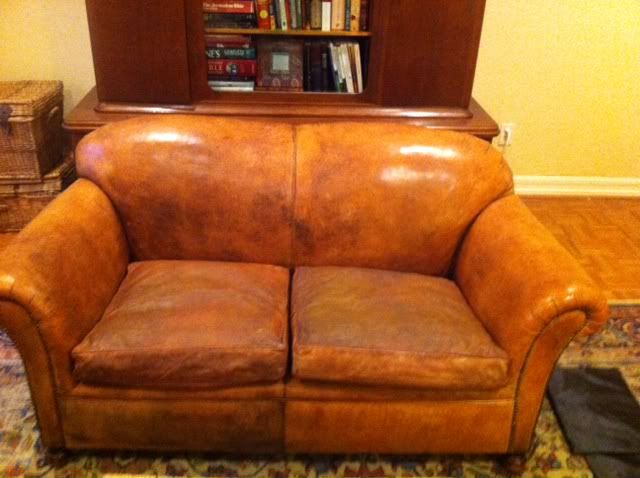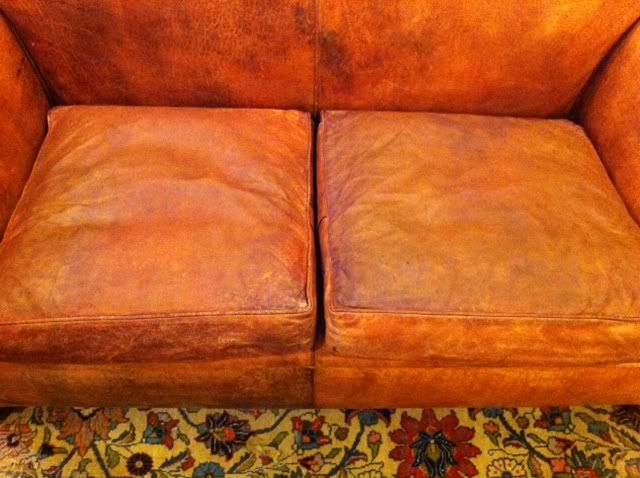Thanks for your interest…
Abi, Jim, Craigp and Hector.
Jim.
By the way, let me know if you like to have a second opinion regarding how best to restore the black "antique finish" that have wear off.
Roger certainly gets some challenges. I for one would love to see the end result, and the process that he used to rectify such damage. By seeing problems on a forum, and having it explained fully, I believe, tremendously helps those that may be searching for a better education be it carpet or upholstery cleaning, leather repairs, or any other segment that we find ourselves being faced with daily. I can't see much point in simply posting photos and not naming products that are used to give the desired results. Maybe a personal email would be the way to inquire. ?? Shorty.The 3 pictures below were the end results done by the owner himself from Texas, USA out of a DIY kit; I am from Vancouver, Canada giving advices. No difference if you have such problem in Australia, perhaps moldy problems; common in the almost tropical climate that you enjoy. Besides leathers, I receive such enquiries as to the care of Zebra skins and Cowhides that have musty odors and stiffness too. Well, we can go into more depth on the technicality if you wish on how this urine damaged aniline leathers were decontaminated and return back to its pre-damaged condition, with extra softness, suppleness and strength plus the buttery-feel and imparted classic leather scent pictures can't reveal. Question me more on process, if you wish…like what happen to the urine, sliminess, stickiness, smells, charred-marks, etc.
Robert
I think you will find that there are plenty of people in the UK who are taking on this kind of work and very successfully too - probably not on this forum though.
Thats a nice piece of furniture Roger - have just restored some very nice dining chairs from about the same era. On older furniture such as this it is always better to aim to restore the leather to keep the aesthetics of the piece rather than replacing panels which is not always an option as the panel would not match the others - obviously on more modern leather panel replacement would probably be the case. Our technicians always work closely with a local upholsterer who they can split the work with should the need arise. Cheers. JudybI agree to the restoring it aesthetically with understanding rather than the convenient of panel replacement to such an old piece circa 1940 for its history value sake.
Good to see a post from you Roger. That one's a nightmare, but no doubt you will get a result be degreasing and re hydrating. Over here the easy approach would be taken, ie, re upholstery which is obviously beyond the average carpet / upholstery cleaners. The viability of such a restoration in terms of time, handling, materials and actual time spent on the work makes it a non starter even for a relatively expensive item. So it's unlikely anyone in the UK would consider it. I know all of the materials can be sourced in the UK but most members of this and other forums don't have the premises or the set up to carry out such work. As far as the suite shown in this post is concerned I believe the de hydration is so bad the leather fibres are barely holding together and would require a large fexible patch on the back of the seats to stop splitting. I know there are products which may fill and bind the deep cracks but I've never used them. Looking forward to the end result and wishing I was a little younger with the knowledge and the pruducts available today.
As the leather on the suite shown has all but fallen apart and would require to have many hours spent on it and it would also require to be taken away to work on the cost would be enormous and therefore I believe non viable as a restoration job. I'm well aware there are people and products which could greatly improve the appearance of these items but it would have to be stripped from the frame in order to add strength and avoid the deep cracks becoming splits. I carried out a repair on a similarly " wrecked " chair about four years ago as an exercise and without charge as I deemed it to be experimental and for a relative. On that occasion I got a good result but I'd only worked on the top surface. Unfortunately I never kept track of the chair so don't know how long the repair lasted. Would be interesting to see some examples of similar restorations from the people you mention.Robert;
Thanks for sharing your views on the confident that it can be done with new technology and yet the setback for such a task if done traditionally.
Pictures you see below are the result of such accomplishment with new technology using science and logic, by the owner himself with DIY kits.
Does he need to go for training, no; what he did was just taking instructions from the recommended urine kit for aniline leathers with confidence.
This job was done right over the rug on his probably antique coffee table too.
If a home owner can produce such result the first-time-right; how much potential would a professional be if he has taken the effort to acquire the latest 21st Century knowledge base on science and logic even out of a kit?
Of course there are interim pictures as well, before reaching this final result, if you wish to see them.
#1

#2

#3

Roger Koh
